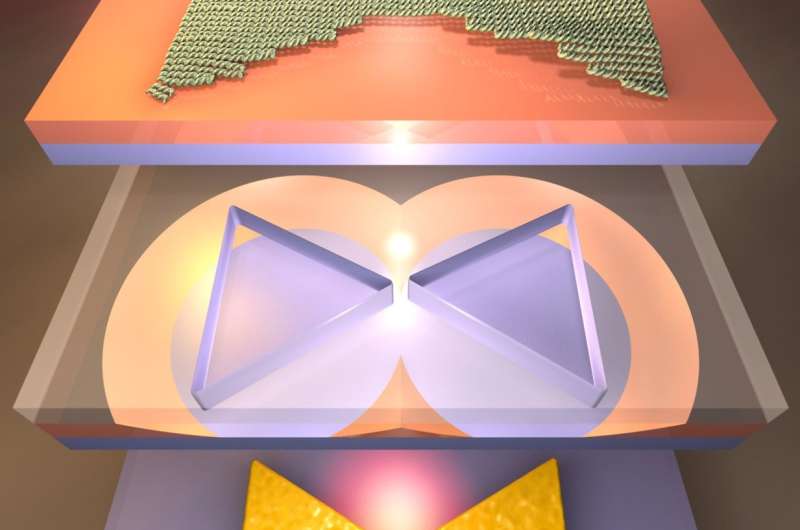Building miniature optical antennas using DNA as a guide

An international research collaborative has reported a new, highly parallel technique to fabricate precise metallic nanostructures with designed plasmonic properties by means of self-assembled DNA origami shapes. The so-called DALI (DNA-assisted lithography) method has been published in the latest issue of Science Advances.
"We can build virtually any nanoscale shape using a DNA origami technique, and now we have shown how to use these accurate shapes as "stencils" to create millions of fully metallic nanostructures with 10 nm feature sizes in one go," explains Adjunct Professor Veikko Linko from Aalto University. The trick in the DALI method is that when the DNA structures are deposited on a chip coated with silicon, silicon oxide can be selectively grown only on the bare areas of the substrate. "By controlling this process, we can create origami-shaped openings on the grown silicon oxide layer, and this layer can be used as a mask for the following lithography steps. Finally, we evaporate metal through these openings and create metallic structures having the same shape and size as the original DNA origami on a transparent substrate, such as sapphire," Boxuan Shen from the Nanoscience Center of University of Jyväskylä describes the method.
The tiny metallic features cover the whole transparent substrate, and therefore these surfaces have intriguing optical properties. The small dimensions of the structures—in the range of 10 nanometers—allow further tuning of these properties at the visible wavelength range. "Actually, we have demonstrated here a structure that we believe is the world's smallest entirely metallic bowtie-shaped antenna. This extremely small size extends the operating range of optical features from infrared to visible," says Adjunct Professor Jussi Toppari from the University of Jyväskylä. These antennas have dozens of optical and plasmonic applications, such as surface enhanced Raman spectroscopy, biosensing or fluorescence enhancement. Moreover, the researchers demonstrated that the surfaces can be used as polarizers by fabricating chiral structures using DALI.
"The DALI method is highly parallel, and it could further enable cheap wafer-scale production of surfaces as it does not rely on costly patterning methods. It is also equipped for the future studies to provide bioinspired surfaces and metamaterials if the customized origami structures can be arranged on the substrate before metallization," says Professor Mauri Kostiainen from the Biohybrid Materials Group at Aalto University.
More information: Plasmonic nanostructures through DNA-assisted lithography , Science Advances (2018). DOI: 10.1126/sciadv.aap8978 , advances.sciencemag.org/content/4/2/eaap8978
Journal information: Science Advances
Provided by Aalto University





















